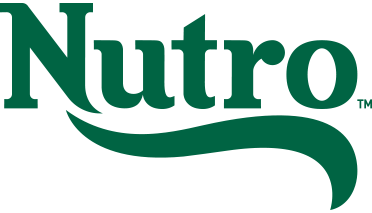
Safe and Hazardous Plants for Dogs
By: NUTRO Pet Food
When making your home dog-friendly, it’s easy to overlook the dangers that houseplants can pose. While plants can add a touch of nature and fresh air to your home, not all of them are safe for your furry friend. Knowing which plants are toxic and which are safer is crucial to ensuring your dog’s well-being.
Are you curious what plants you should avoid? Which plants you should consider? We’ve got you covered. Plus, get tips on how to protect your dog both indoors and outdoor
Common Toxic Plants for Dogs
Extremely Toxic Plants
Sago Palm

Symptoms: Liver failure, which can be life-threatening
Precautions: Keep this plant out of reach or avoid it entirely.
Moderately Toxic Plants
Pothos

- Symptoms: Mouth and throat irritation, difficulty eating or drinking
- Precautions: Place in high, unreachable area
Lemongrass

- Symptoms: Stomach issues, nausea, vomiting, diarrhea
- Precautions: Avoid planting in accessible areas.
Cyclamen

- Symptoms: Mouth and throat irritation, difficulty eating or drinking
- Precautions: Keep out of reach or avoid.
Jade Plant

- Symptoms: Vomiting, diarrhea
- Precautions: Place in high, unreachable areas.
Aloe Vera

- Symptoms: Diarrhea, vomiting
- Precautions: Keep out of reach or avoid.
Dumb Cane

- Symptoms: Mouth and throat irritation, difficulty eating or drinking
- Precautions: Keep out of reach or avoid.
English Ivy

- Symptoms: Mouth and throat irritation, difficulty eating or drinking
- Precautions: Place in high, unreachable areas.
Snake Plant

- Symptoms: Vomiting, diarrhea
- Precautions: Place in high, unreachable areas.
Peace Lily

- Symptoms: Mouth and throat irritation, difficulty eating or drinking
- Precautions: Keep out of reach or avoid.
Bird of Paradise

- Symptoms: Vomiting, diarrhea
- Precautions: Place in high, unreachable areas.
Top Non-Toxic Plants for Your Dog
By choosing non-toxic plants, you can enjoy a beautiful, green home while help keeping your dog safe and happy. If you’re ever unsure about a plant’s safety, it’s always a good idea to double-check with your veterinarian or a reliable source. Keep in mind: even if a plant is considered non-toxic for dogs, it’s still not a good idea to let them eat it or chew on it.
Spider Plant

- Benefits: Easy to care for, produces baby plants
- Placement: High shelves or hanging planters
Parlor Palm

- Benefits: Low maintenance, adds a tropical vibe
- Placement: High shelves or corners
Tillandsia (Air Plants)

- Benefits: No soil needed, can be displayed creatively
- Placement: Driftwood, hanging glass bulbs
Staghorn Fern

- Benefits: Unique antler-like fronds, adds an exotic touch
- Placement: Hanging displays
Boston Ferns

- Benefits: Lush, green foliage, air-purifying
- Placement: High shelves, hanging planters
Maidenhair Fern

- Benefits: Lush, green foliage, air-purifying
- Placement: High shelves, hanging planters
Prayer Plant

- Benefits: Vibrant, patterned leaves, easy to care for
- Placement: High shelves, indirect light
Rosemary

- Benefits: Safe herb, fresh scent
- Placement: Kitchen windowsill, high shelve
Ponytail Palm

- Benefits: Unique, sculptural look, low maintenance
- Placement: High shelves, various lighting condition
How to Protect Your Dog Around Plants Inside and Outside
Create a Pet-Friendly Outdoor Space
- Maintenance: Regularly remove new growth and harmful species.
- Training: Use positive reinforcement to keep your dog in safe areas.
- Activities: Provide dog-safe toys and activities to keep them occupied.
- Supervision: Keep your dog on a leash in public areas and supervise in the backyard.
Create a Pet-Friendly Indoor Space
- Placement: Place non-toxic plants on high shelves, hanging planters, or elevated stands.
- Precautions: Even non-toxic plants can cause digestive issues if ingested in large amounts.
If You Suspect Plant Poisoning
- Potential Indicators: Excessive drooling, vomiting, diarrhea, lethargy, difficulty breathing.
- Action: Contact your veterinarian or an animal poison control center immediately.
- Information: Be ready to provide details about the plant, the amount ingested, and any symptoms.
By following these guidelines, you can help create a safe and beautiful environment for both you and your dog!
